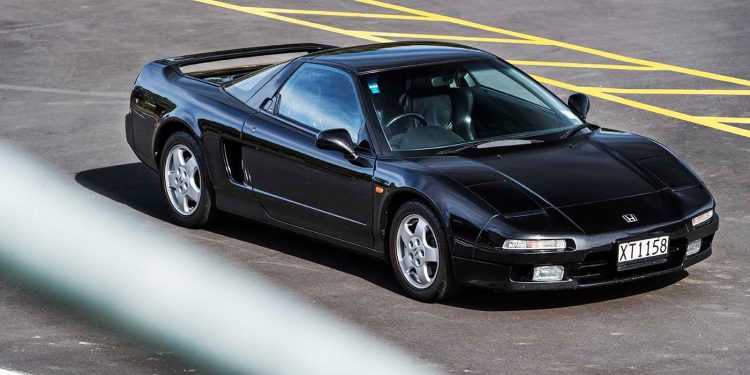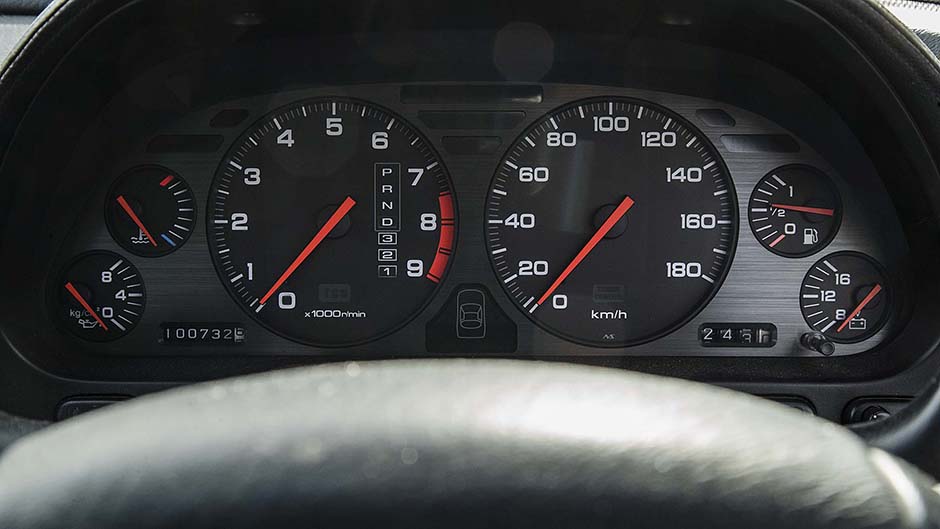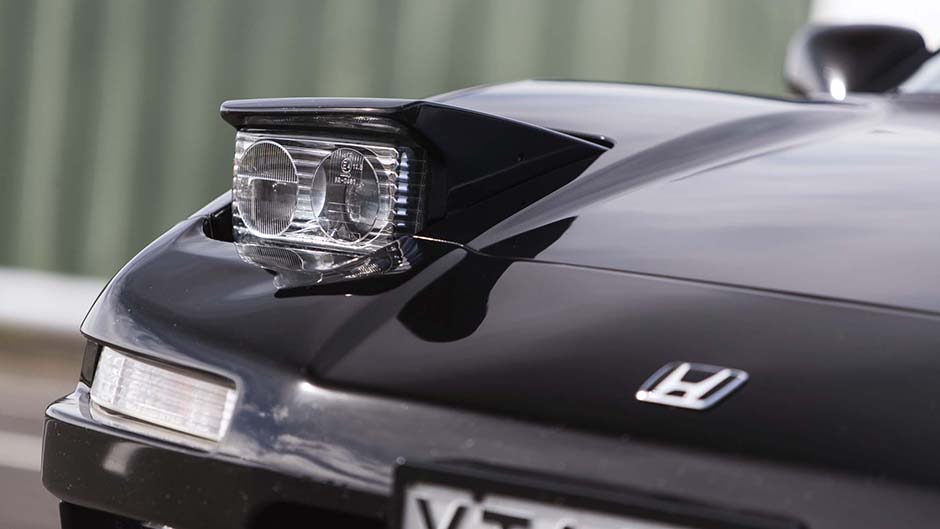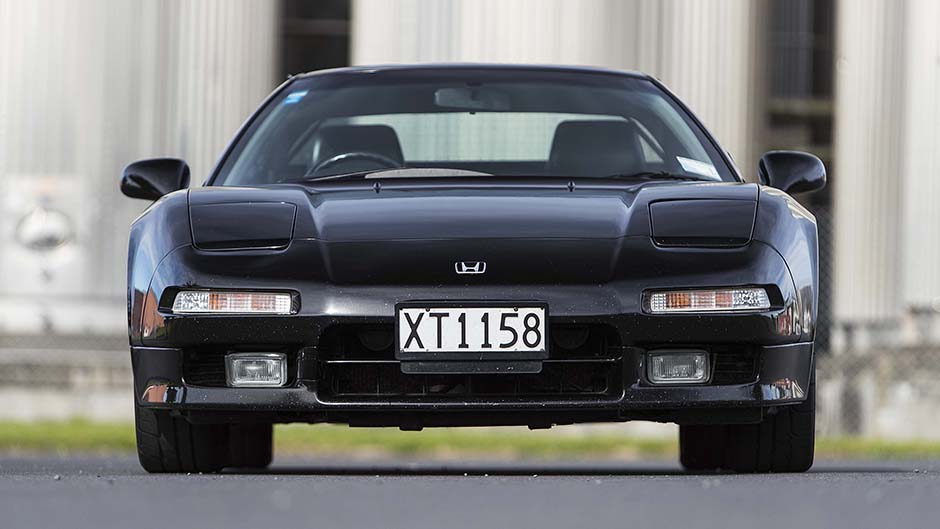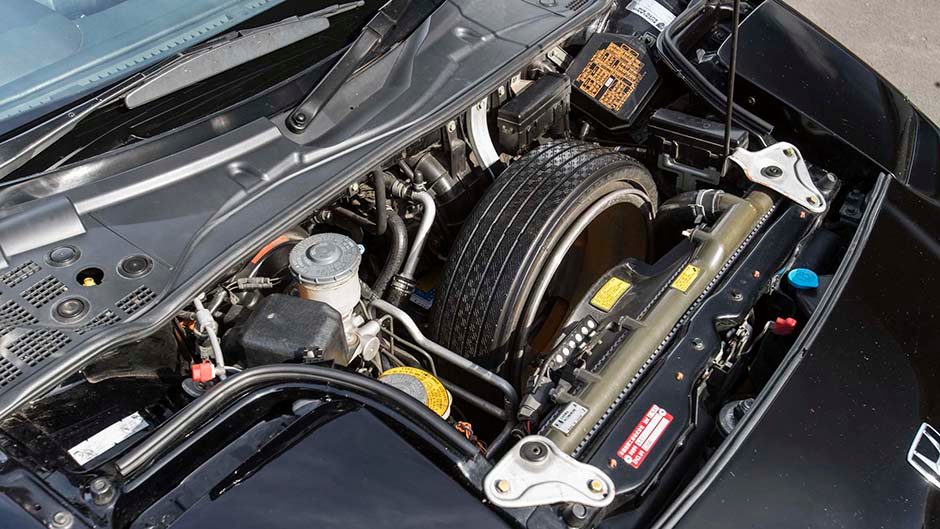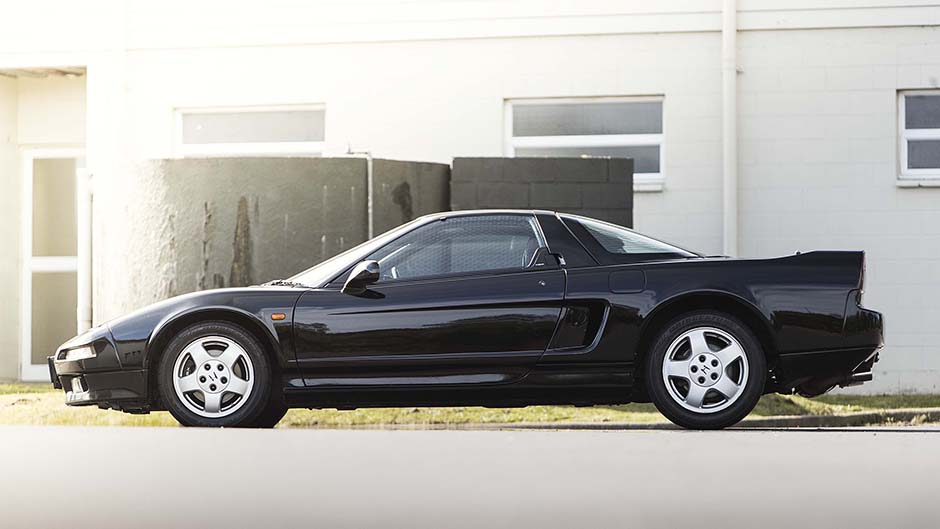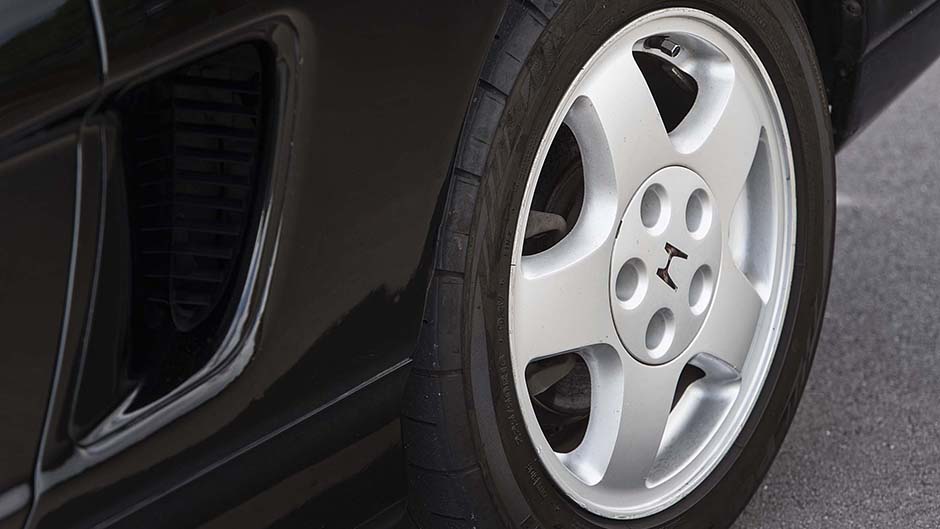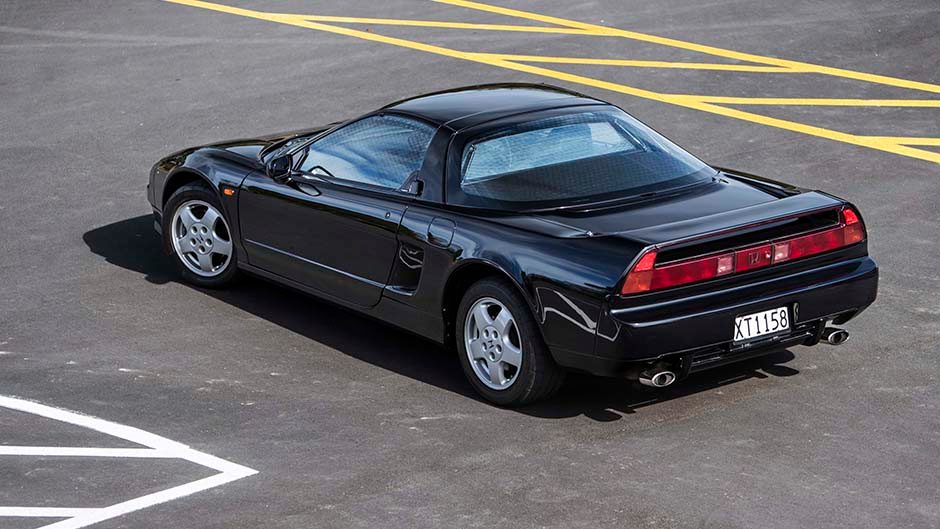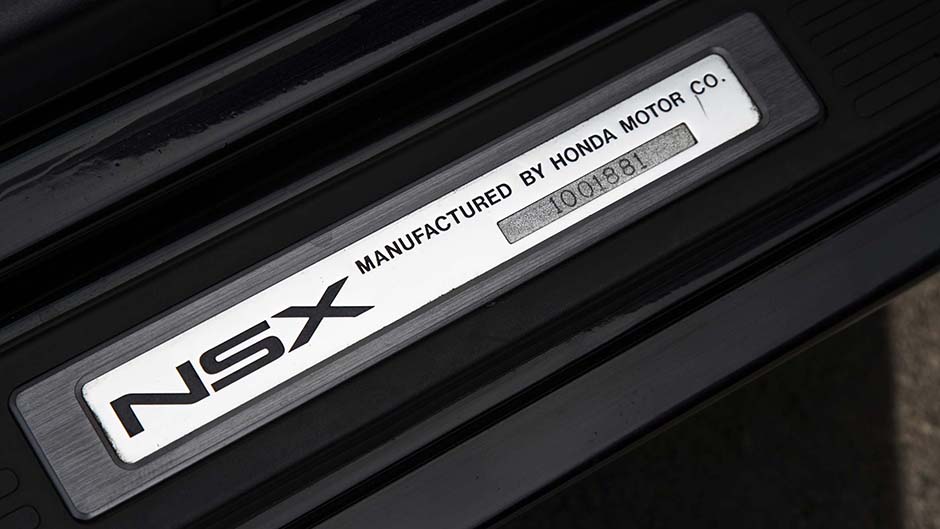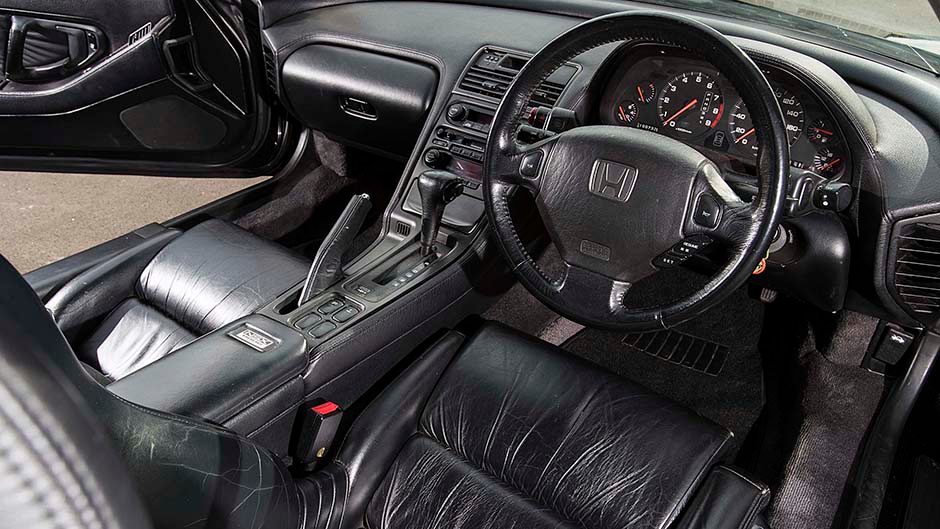1991 Honda NSX
Words Kyle Cassidy | Photos Tom Gasnier
Honda set out to challenge the motoring heavies in the early nineties with its lightweight NSX, a car that also introduced everyday comforts to the sportscar world.
The New Sportscar eXperimental project was birthed back in the late eighties when Honda was very much an engineering-led company. It was on top of the F1 world, powering Williams and McLaren to constructors’ titles, and the Accord was America’s best selling car. Everything was just peachy then and the environment right for Honda to rise up and challenge the big boys by producing a true sportscar. The NSX was tasked with giving Honda a halo machine, an image leader to build on those F1 victories. But Honda also wanted its sportscar to be usable; something that was fun-to-drive but also easy to live with.
The firm benchmarked most of the European sportcars of the day, mainly those Italian ones built by Ferrari, finding them hairy handlers on the limit and not so easy to live with day-to-day. Honda wanted to right all the wrongs by making an enjoyable, user friendly driver’s car. The NSX was meant to capture all the dynamism of those Euros, and iron out all the problems and weaknesses, especially reliability issues.
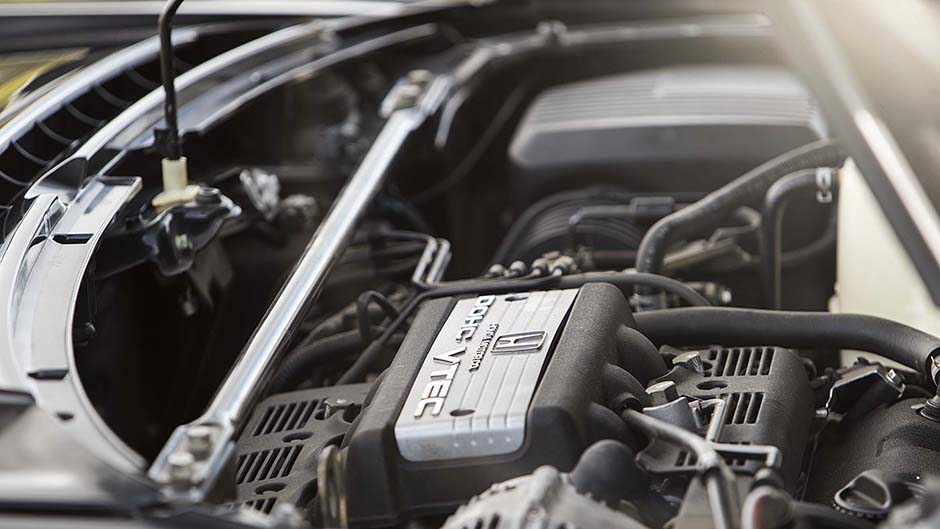
The car was built largely from aluminium, alloys used for the chassis and most of the body panels, to help Honda meet its handling targets and allow for a smaller, compact power unit. At the time, the NSX was the most advanced car on sale in terms of its aluminium construction, with varying gauges of aluminium and bonding techniques used to manufacture a body-in-white weighing a claimed 210kg. At the time, Honda said it had the same stiffness as a steel chassis yet weighed 135kg less but also cost three times as much. Much of the suspension – the subframes, arms and the wheels – were alloy too, the rims formed from forged aluminium to save six kilos overall.
The NSX is from a time when 15- and 16-inch wheels were big, the NSX wearing 255/50R16s on the rear and 205/50R15s on the front. The original tyres were painstakingly developed by Yokohama to the extent that the construction and compound were subtly different for each corner. The front suspension used a double wishbone arrangement with a coil over damper yet wheel location was handled solely by the wishbones. A ‘compliance pivot’ linked the wishbones together and was mounted to the body. It maintained the front end geometry, in particular toe angle as the wheel moved up and down. Honda was big on four-wheel steer at the time, but it was rejected for the NSX on weight grounds; power-to-mass was key, the NSX weighing 1370kg ready to rumble, with a 42:58 weight distribution.
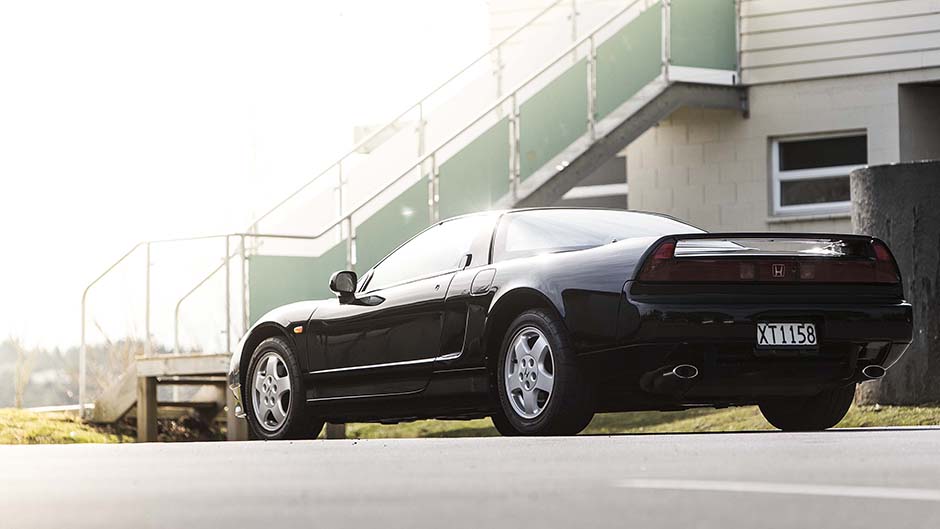
On the subject of go, the motivation for the NSX came from a 3.0-litre V6, which started life in the Legend, and Rover 800, Honda owning 20 per cent of the British basket case at the time. It was compact enough to be installed transversely in the middle of the chassis while allowing for a sizeable rear boot, Honda keen on maximising the NSX’s versatility. The power, 201kW was realised at 7000rpm but the six could spin to 8000rpm thanks to titanium conrods and Honda’s VTEC (variable valve timing and lift electronic control) system. The electro-hydraulic cam controller switched the rocker arms to a different camshaft profile with higher lift and longer opening, the switch happening around 5800rpm. This added engine breathing gave rise to top-end power while below this mark the regular cam profile helped maintain drivability at low engine speeds. The engine also gained a variable induction system to suit the VTEC operation. Boosting convenience, the NSX could be had with a four-speed auto as well as the five-speed manual, though the autos had less power, 188kW, but the same 280Nm of torque at 5400rpm. Performance creds amounted to a 0-100km/h time of 5.2sec for the manual and a top end of 270km/h.
Honda devised an electric steering set-up for the NSX, one of the first cars to employ volts to ease the steering weight, and four-channel ABS and traction control were present too.
NSX had a relatively long wheelbase to aid stability, and one of the few alterations that was made to the initial concept was the addition of more space between the wheels to aid both stability at speed and interior accommodations. The cabin was panned at the time for a lack of occasion, with many Honda mass market bits used, but it included a steering column that adjusted for both reach and tilt, four-way powered seats, auto air con and even cruise control. The large glasshouse was a necessity for better all-round vision, again that everyday usability a key attribute of the design. The NSX had an inflatable space saver spare located up front, while the boot had room for the golf clubs.
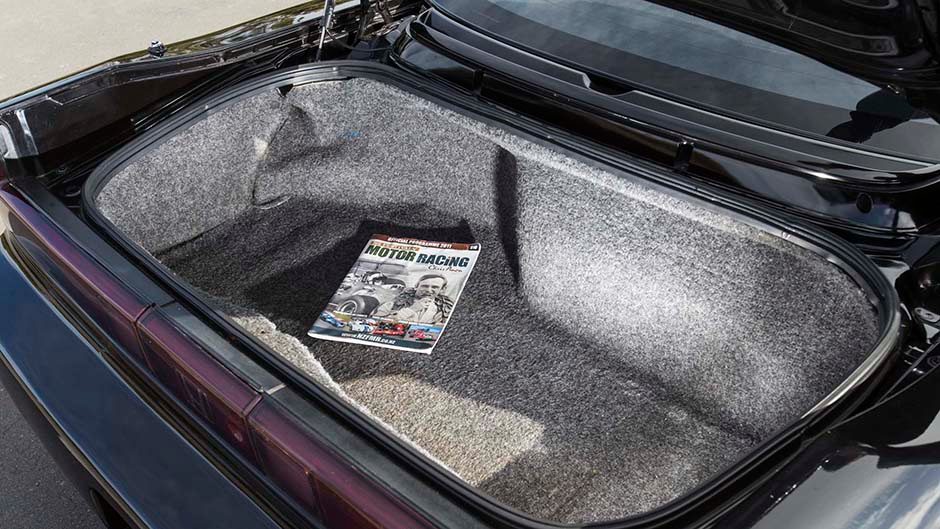
The cars were largely hand-built in Honda’s Tochigi Technical Centre, production starting in late 1990 at a rate of 25 cars a day. The NSX was expensive, over $170,000 when new in New Zealand, and while it succeeded as a halo car for the brand, Honda sold just over 18,500 cars globally during the NSX’s 15-year run.
This 1991 example belongs to Aucklander John Samson who has been a happy NSX owner for the past 16 years. Samson says he just liked the whole NSX concept; “It was pretty radical for the day, the all-alloy body and the way Honda went about creating it.”Samson has owned a Ferrari 246 Dino which ‘came to an untimely end at Pukekohe’ and a couple of 911s. “As much as I enjoyed the challenge of driving the 911s, and it was a challenge taming the back end, I’d always hankered for an NSX.”
Samson also owned a 1969 Mercedes Benz 280SL. “I parked it up one day in Parnell and when I came back there was a guy looking at it, and he says ‘I used to own this car’. He wondered if he could tempt me into selling it.” He turned out to be former Auckland car dealer, Michael Clark. Samson says; “He had a car yard full of Mercedes, BMWs and Jaguars, and I really wasn’t interested in anything there. I was just about to walk out when I saw the NSX in the corner, and I thought, hang on a minute, and so I swapped him my Mercedes for the NSX.”
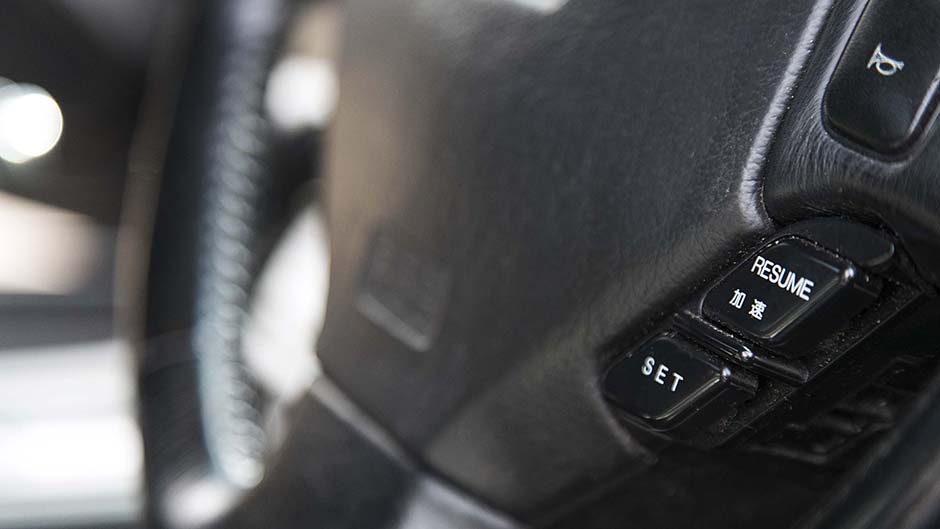
He’s glad he got an auto too. “The aficionados say you’ve got to have a manual, but as the years get on, I’m glad I bought the auto. And the manual cars didn’t have power steering. It just makes everything so easy, and I’m not getting any younger,” he says with a smile. “It’s a very user friendly car,” says Samson who drives it mainly on weekends as he gets around normally on his various motorcycles. “One of the first trips we took showed the advantage of this car actually having a spare wheel as on the Desert Road we got a puncture.”
And so is it a reliable sportscar? “It’s a Honda after all so it’s been very reliable. I can leave it for weeks and it will start again when I need it. If I left my old Ferrari for two weeks I had to take the rear wheel and inner guard off to get at the distributor to clean the points to get it to start.”
With the Honda’s unique rubber Samson says it’s difficult finding new tyres. “You can’t get the Yokohamas any more, these Bridgestone’s are good, but are hard to find in this size. The later model came out with 17s which most people upgrade to but I want to keep it original.” And would he sell it? “There’s nothing I don’t like about it, and that’s why I’ve owned it for so long. It’s a car I really enjoy and want to keep.”


